Wetpixel reports live from DEMA 2015
DEMA Show 2015 Day 4

BS Kinetics
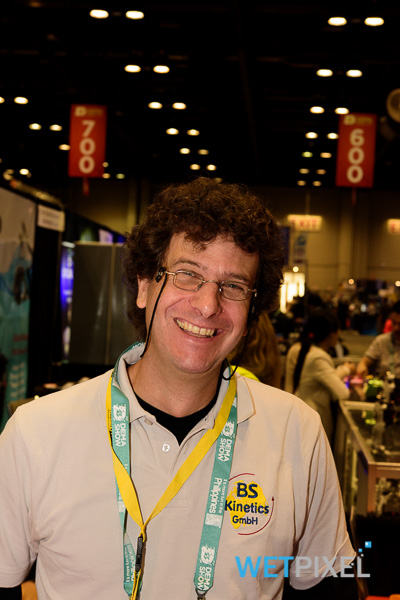
On our last day of the show, our first meeting was with Bodo Sutterer of BS Kinetics.

He showed us their high strength carbon fiber ready to dive housing for the Sony a7 MkII with his 6” dome port.

He offers a kit with the housing and including a flat port for 2,000 Euros.
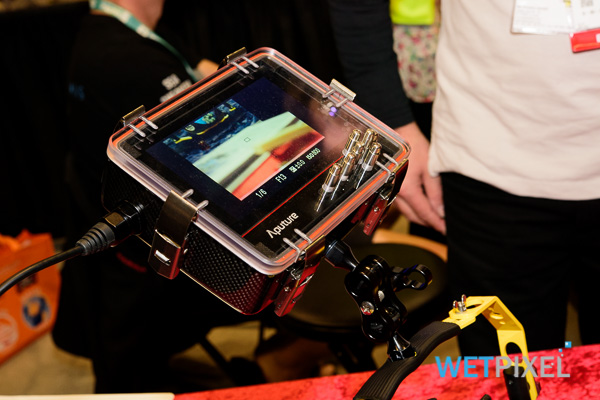
He also walked us through BS Kinetics 7” monitor housing for the Aputure monitor. Run time is four hours on a charge. For $1,000 Euros, the monitor housing comes dive ready with an HDMI cable.
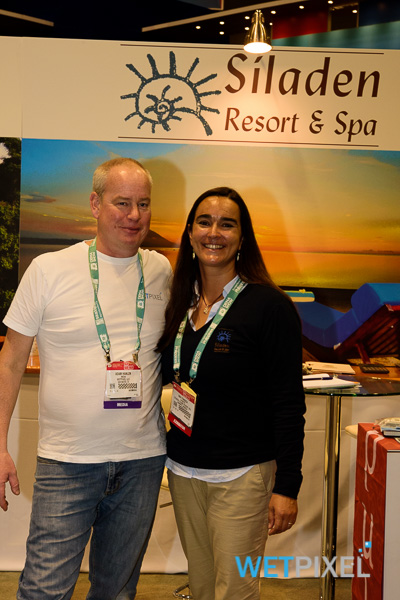
H2O Photo Tools
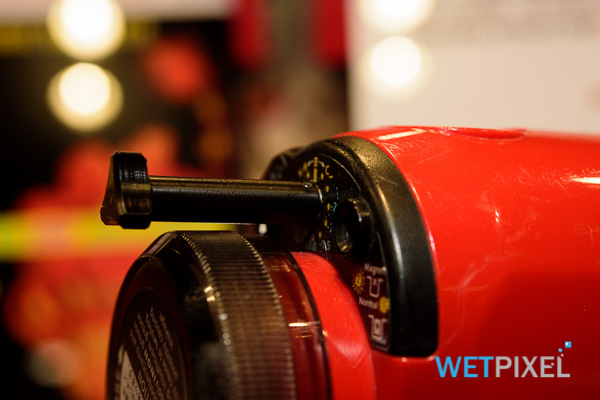
We then spoke with Stefan Horvath of H2O Photo Tools, which was very convenient as BS Kinetics and H2O photo tools were sharing the same booth. First he showed us the Inon S 2000 Optimize Set which is a knob extension for the rotary switch on the Inon S 2000 strobe. A very useful item for anyone diving with gloves and using this strobe, and it can be yours for 20 Euros.

We then checked out the Fluro filters for fluorescent photography for the Inon Z-240 and Sea & Sea YS D-1 and D-2 strobes. These are priced right at 100 Euros.

The last thing we looked at was the yellow plastic mask plate for fluorescent photography and simple light filter.

Retail prices are $20 US for either.
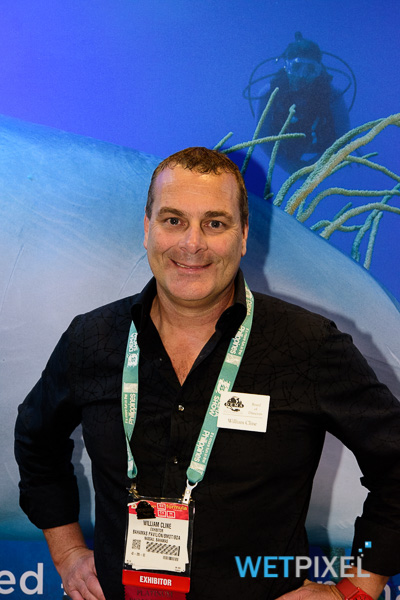

Saga

The second booth we visited was Saga, and we spoke with Jordi Benitez Castells. The first item he showed us was the Magic Ball Lens.

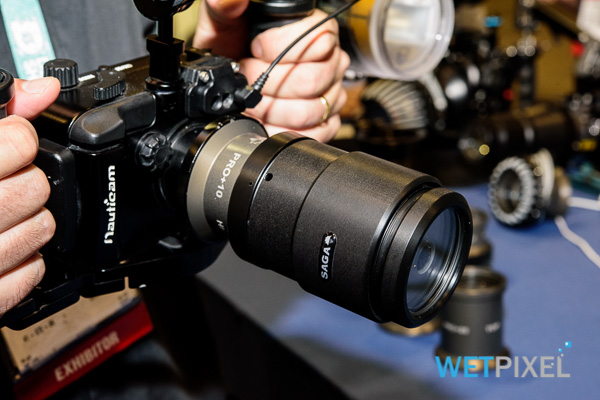
This lens produces some really interesting imagery with an inverted spherical image in the center of the frame and blurred image surrounding. The lens is wet mateable with a 67mm thread and requires a diopter to focus on the virtual image. Retail price is $227 approximately.
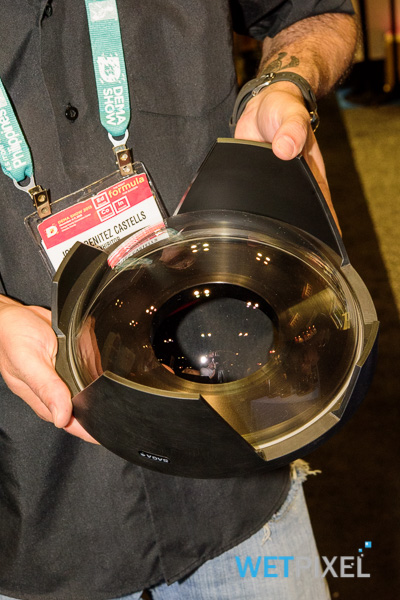
He then showed us their 9”, 6” and 4” dome ports that can be machined for any manufacturer’s housings. The dome ports are glass coated inside and out.

He also showed us an expandable macro port that can be twisted and extended to fit a variety of lenses, thus eliminating the need to travel with multiple macro ports to use multiple macro lenses.
We also checked out a flip adapter with a thread to accommodate a variety of sized ports.
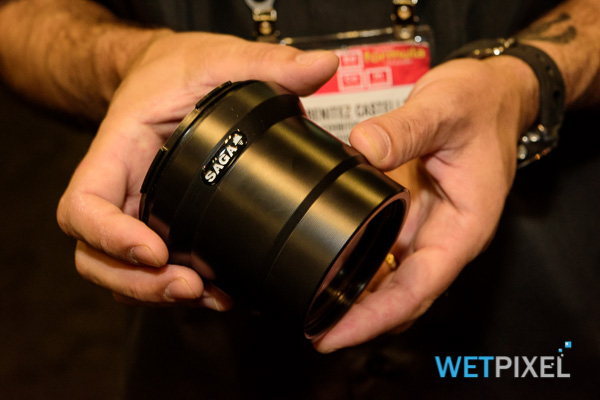

Jordi was pleased to inform us that Saga will now be manufacturing flip adapters for Subal, who will be selling these adapters for their housings as well as Saga for Gates that will flip macro or wide angle for Gates housing ports.
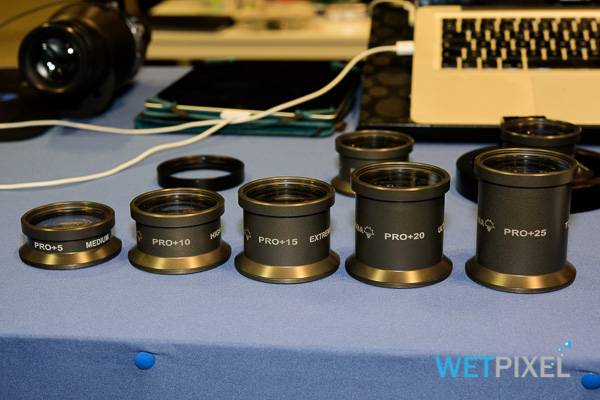
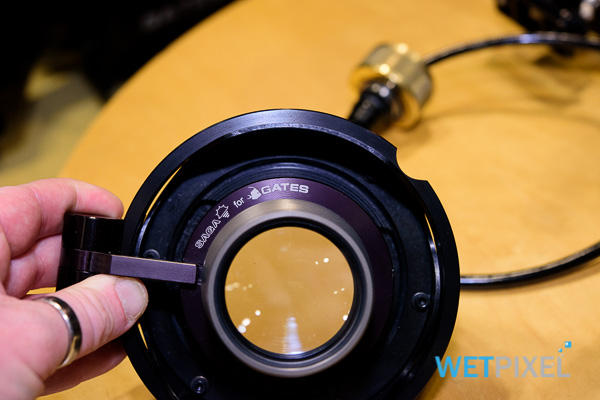
Saga also has a line of diopters that range from +5, +10, +15, +20, to +25. The adapter for stacking these on the front uses a pressure seal on one side and has threads on the other. The advantage of keeping the front end of the diopter at a diameter less than 67mm is that you can use slight downward angle when shooting.
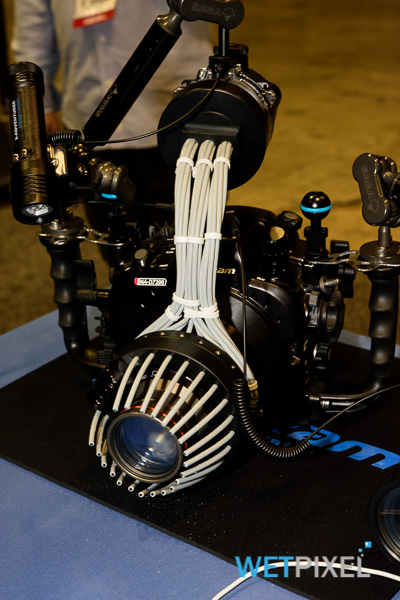
Saga makes a ring flash that was released last year and bears a memorable design. The light travels from the strobe and through the fiber optics to (typically) light a macro subject with a diopter at minimum focus focus at around f32.

However, Jordi showed us that by using f20, and possibly by removing the diopter, you could light subjects up to 8 inches away. The ring flash is custom built according to the user’s strobe, lens, and port choices once an order is placed.

Additionally this year Saga has introduced a ring flash for compact cameras that is lit from the camera’s internal flash, eliminating the need for separate strobes while shooting macro subjects. The price point is approximately $340 US.
The last item we explored was Saga’s snoot. There are several different sized openings to select the size of the light on the subject, these choices are lit up externally by one fiber optic cable for ease of choosing while night diving. Also, the focusing light is one fiber optic fitted through the snoot.
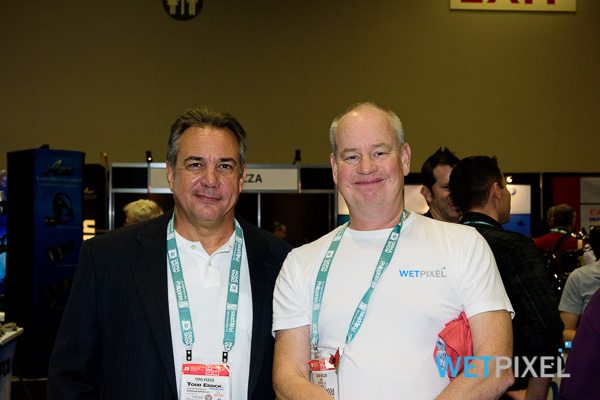
Gates Underwater Products
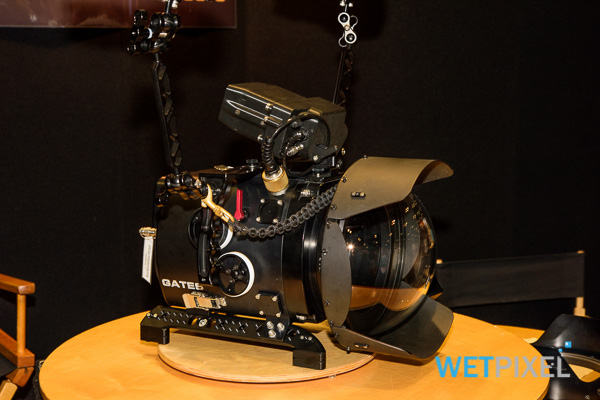
John Ellerbrock of Gates showed us around the company’s new housing for the Alexa Mini camera. He is excited about the new camera as he feels that it will draw the super reliable Arri cameras into the natural history arena.

The new housing is 30% smaller than Gates’s housing for the RED Dragon, and the whole rig can be carried in two under 50 lbs packages, making it feasible for travel use.
Arri provide an GPI/O box that enables the cameras electronic controls to be activated via an external switch. In this case, the camera will simply plug into the GPI/O, which will than allow the user to control functions via 12 buttons on the housing.
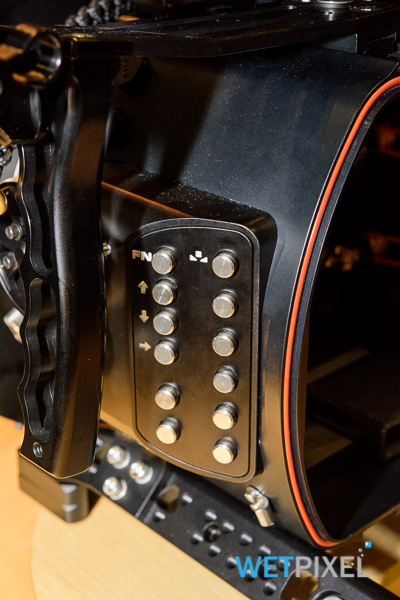
These buttons are user assignable and can include menu navigation or manual white balance. Gates does not make or provide the electronic control system but Arri provide the interface, allowing them to provide their signature mechanical housing with access to electronic controls.

Gates has used several innovative manufacturing techniques. Firstly, some of the parts have been 3D printed, allowing the design to create parts that could not be shaped using conventional machining. Secondly, the zoom/focus/iris knobs on the housings’s right hand side utilise drive belts. This provides a damper, which gives smooth operation (for focus pulling for example) with no backlash.
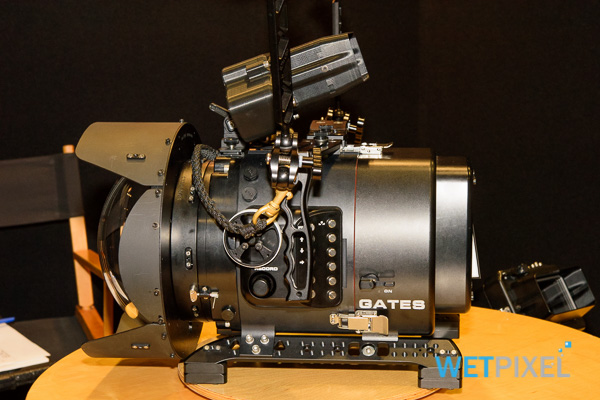
Gates have designed a 10” dome port for this housing, which will accept PL mount, Arri and Zeiss lenses.
Externally, the handles will be capable of fore to aft adjustments, as well as for lateral and offset angle. The retail on the Arri Mini housing is ¢16,260.

John also walked us through their housing for the RED Weapon. Gates will offer an upgrade path for owners of existing RED housings to the new version. The Dragon housing will retail at $16,260.
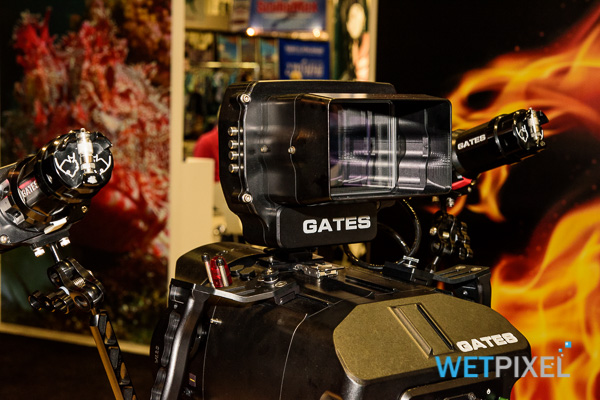

Attached to the RED Dragon housing was Gates’s new RT7 housing for the 7” Red monitor. Gates have built a cable that passes through a gland directly into the housing so have also created a monitor cable that has water dams, meaning that a cut cable cannot act as a conduit to carry water into the housing.

Lastly, John showed us the GT14 lights that will ship soon. they feature 14,000 lumen output that is adjustable over 5 steps. they have a ready mode that is denoted via a red LED. After 30 minutes in ready mode without activation, the light then switches off completely. In order to start it again, it is necessary to rotate the control bezel (which has a safety lock) through 90° in both directions. This provides additional safety for travel.

Another safety feature is that it is not possible to insert a battery while the light is in the on position. Lastly, the lights feature a thermal cut out that will simply shut them down if they get hot. They have large water spaces between the battery compartment and the LEDs to prevent this happening in the water, but they would heat up quickly in air.
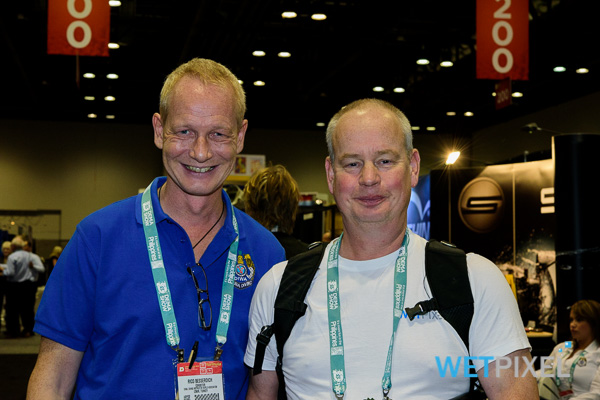
10 Bar
The last booth of the day and the show was 10Bar. We met with L C Ng who walked us through their new products.
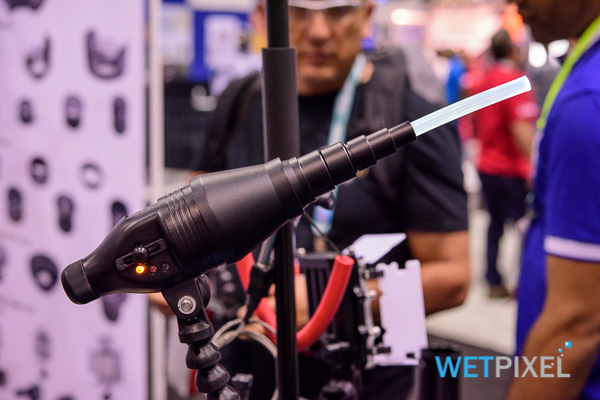
First we checked out their LED 2000, which is their snoot light that has both white and UV blue light.
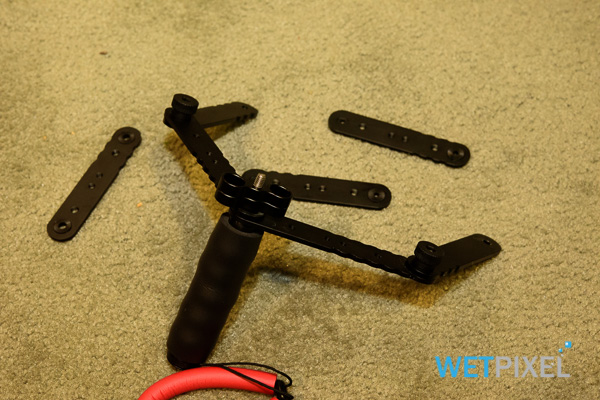
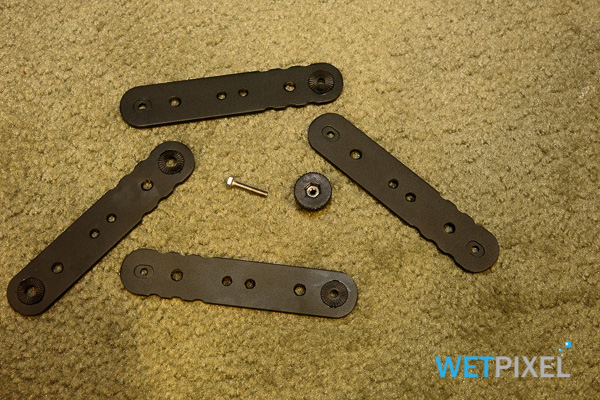
Then he showed us the DIY Stay, which can be used in a variety of different configurations including a stand or tripod or even a table when used with 10Bar pointers.


The last item he showed us was the Ultra snoot which has a red laser pointer for proper positioning and turns off when the strobe fires. This fits the S-2000 and Z-240 strobes standard, however, it can be special made to fit any other strobe.
Day 1: Booth visits - ULCS, XIT404, Aquatica, i-Torch, GoPro, New World Publications, Subal and Nauticam.
Day 1: Wetpixel/DivePhotoGuide Imaging party.
Day 2: Booth visits - Fisheye, Ikelite, Sea&Sea, Backscatter, Olympus and Keldan.
Day 3: Booth visits - Orcalight, Seacam, Acquapazza, Light and Motion, Inon, Fantasea.
Day 4: Booth visits - BS Kinetics, H20 Photo Tools, Saga, Gates, 10 Bar.